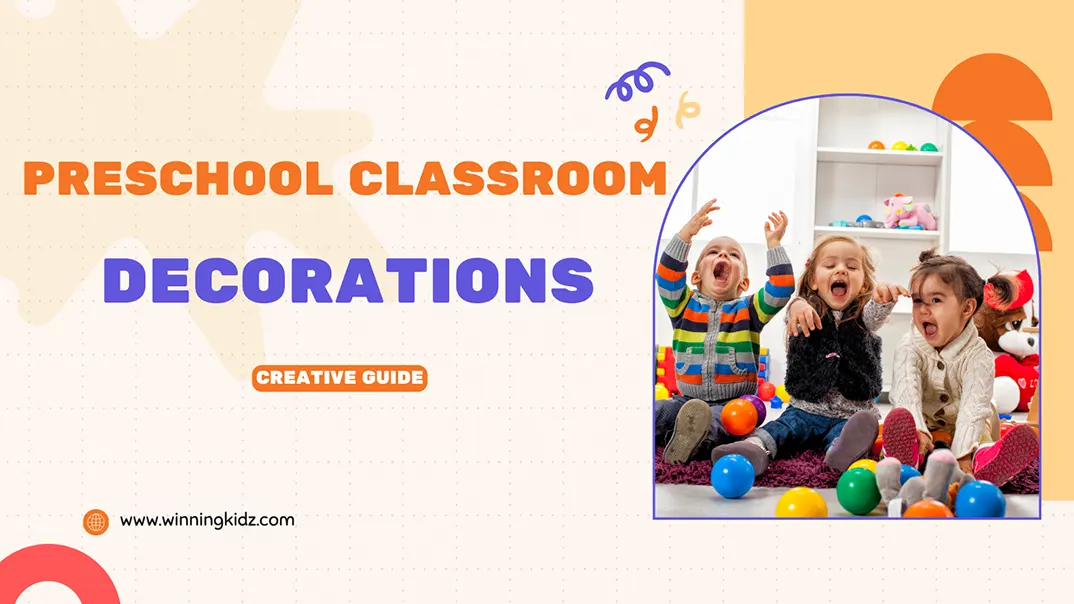Have you ever walked into a preschool and felt a sense of warmth, creativity, and inspiration? Or maybe you’ve entered a classroom cluttered, overstimulating, or uninspiring. Creating the right classroom atmosphere is crucial for young learners’ development, but where do you start?
The key to effective preschool classroom decorations is balance—creating an engaging, visually stimulating, and educational space without overwhelming young children. From choosing the right color scheme to incorporating interactive elements, every detail contributes to a child’s learning experience.
In this guide, I’ll walk you through a step-by-step process for transforming your preschool classroom into a space that fosters creativity, learning, and comfort. Whether you’re a kindergarten director, a Montessori educator, or a preschool furniture supplier, this guide will help you craft an inspiring environment for young minds.
Why Preschool Classroom Decorations Matter?
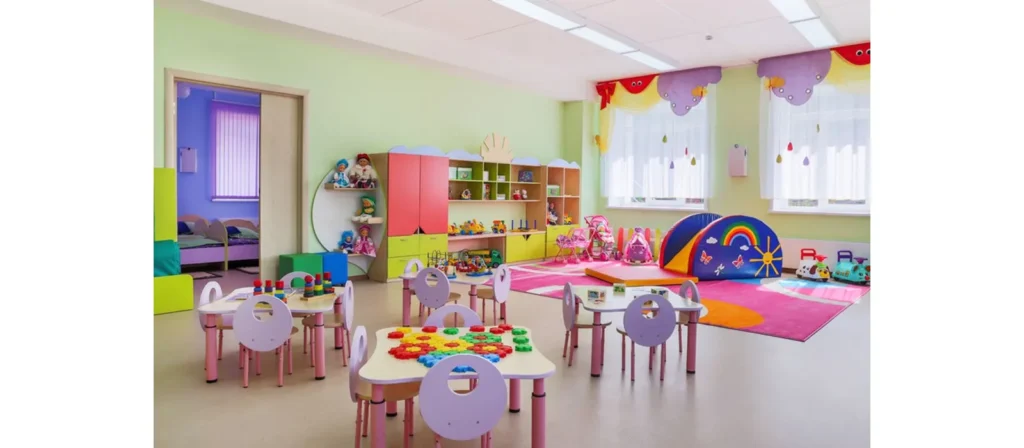
A preschool classroom is more than just a space where children learn—it’s an environment that influences their emotions, behaviors, and cognitive development. The right classroom decor can create a welcoming atmosphere, reduce anxiety, and foster a sense of belonging.
The Psychological Impact of Classroom Design
Research suggests that colors, spatial organization, and visual stimuli significantly impact children’s learning abilities and emotional well-being. Bright, warm colors can energize children, while soft pastels promote calmness and focus. Defined spaces within the classroom, such as reading corners and creative zones, provide structure and help children transition smoothly between activities.
Encouraging Learning Through Visual Stimulation
Children in their early years learn best through sensory experiences. Thoughtfully designed preschool classroom decorations—including educational posters, themed displays, and hands-on interactive elements—help reinforce learning concepts and encourage exploration.
Promoting Social and Emotional Growth
A well-decorated classroom supports not just academics but also social and emotional development. Displays that celebrate student achievements, diversity, and teamwork foster a sense of pride and inclusivity among children.
Preschool Classroom Decoration Considerations
When decorating a preschool classroom, it is essential to prioritize safety, functionality, and educational value. Decorations should be visually appealing and align with children’s physical and psychological development.
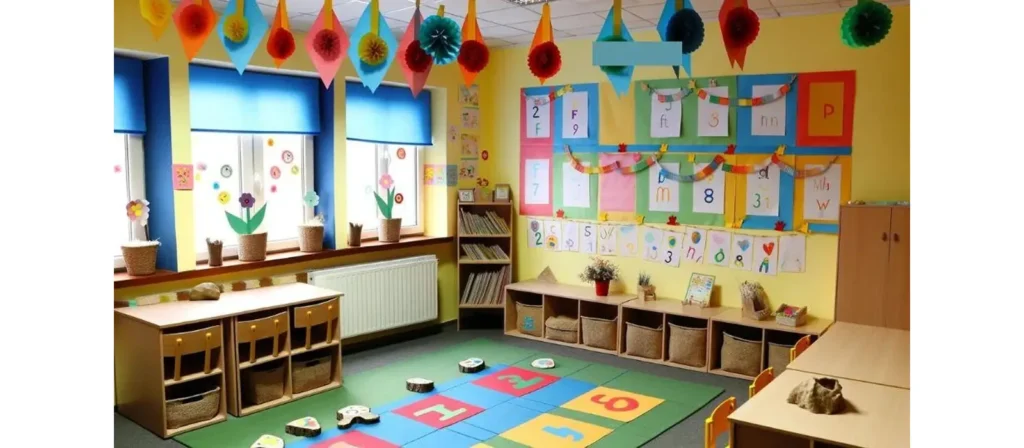
Creating an Environment That Supports Learning
A preschool classroom is more than just four walls and furniture—it is a child’s first structured learning space, a place where curiosity is nurtured and a foundation for lifelong learning is built. The right preschool classroom decorations can turn a plain room into a vibrant, stimulating environment that fosters creativity and engagement. A thoughtfully designed space encourages children to explore, communicate, and develop social skills while feeling safe and comfortable.
For young children, visuals play a critical role in cognitive development. Bright, engaging preschool classroom decorations introduce new concepts, while interactive decorations like sensory boards or themed learning corners provide hands-on experiences. But the goal isn’t just to make the space look nice—decorations should be intentional, creating a structured yet flexible environment where children can focus and thrive. A well-decorated preschool classroom helps set the mood, making school an exciting and inviting place where children feel inspired to learn.
Making the Most of the Available Space
One of the biggest challenges in designing preschool classroom decorations is working within the available space. Whether the classroom is large or small, every inch must be utilized effectively to ensure a balanced mix of open play areas, structured learning zones, and relaxation corners. It is easier in a spacious preschool classroom to designate specific areas for different activities—such as an art station, a reading nook, and a hands-on sensory zone—while maintaining clear walkways and movement-friendly layouts.
For smaller classrooms, the key is to optimize vertical space. Wall-mounted shelves, hanging organizers, and foldable furniture can help maximize storage while keeping the room uncluttered. Choosing multi-purpose preschool classroom decorations, such as interactive walls with learning charts or furniture that doubles as storage, allows educators to make the most of a compact space without overwhelming young learners. Strategic placement of preschool classroom decorations also helps define different classroom areas, ensuring that children understand the function of each space while moving seamlessly between activities.
Balancing Creativity with Budget Constraints
While investing in elaborate preschool classroom decorations is tempting, budget limitations are a reality for most preschools. However, a beautiful and functional learning space doesn’t have to come with a hefty price tag. Educators can create an inspiring preschool classroom within a reasonable budget by prioritizing essential decor elements and exploring cost-effective alternatives.
Diy preschool classroom decor offers an excellent way to personalize the space while keeping costs low. Simple craft projects, such as paper murals, student-created artwork displays, and nature-inspired decorations, can add charm and warmth to the classroom. Thrift stores, second-hand educational supplies, and bulk classroom decor sets provide affordable options. Additionally, investing in reusable and versatile preschool classroom decorations, such as removable wall decals or multi-purpose bulletin boards, allows teachers to refresh the classroom theme without continuous spending.
Collaboration with parents and the local community can also help decorate the classroom creatively. Many parents are eager to contribute materials, such as old books, fabric scraps, or recyclable materials, that can be transformed into engaging preschool classroom decorations. Ultimately, decorating on a budget is about being resourceful and focusing on elements that enhance the learning experience rather than unnecessary embellishments.
Ensuring Decorations Align with Developmental Stages
Not all preschool classroom decorations are suitable for every age group, and what works for older children may not be appropriate for preschoolers. When decorating a preschool classroom, it’s essential to consider the children’s developmental stage. Decorations should be engaging but not overstimulating, educational but not overly complex, and interactive while promoting independence.
Simple and familiar preschool classroom decorations work best for younger preschoolers (ages 2-3). Large, bold images of animals, colors, and shapes help reinforce basic concepts, while low-hanging decorations allow children to interact with their surroundings. For slightly older preschoolers (ages 4-5), preschool classroom decorations can include more detailed elements such as word walls, number charts, and thematic storytelling corners that encourage early literacy and critical thinking.
Additionally, incorporating hands-on and sensory-friendly preschool classroom decorations benefits children’s development. Soft textures, natural materials, and tactile boards provide multi-sensory experiences that help children explore the world around them. The key is to strike a balance—offering enough visual and interactive elements to stimulate learning without overwhelming young minds.
Prioritizing Safety in Classroom Decorations
Above all else, safety should be the number one consideration when selecting preschool classroom decorations. Young children are naturally curious and explore their environment using all their senses, including touch and taste. Every decoration, piece of furniture, and wall-mounted item must be carefully chosen to prevent accidents and injuries.
One of the primary safety concerns is ensuring that all preschool classroom decorations are securely fastened. Hanging objects, especially those placed at a child’s eye level, should be lightweight and properly attached to avoid falling hazards. Furniture with rounded edges, shatterproof mirrors, and soft-fabric decorations can help reduce injury risks. Additionally, all materials used in preschool classroom decorations should be non-toxic and free from choking hazards. Any small decorative items, including beads, buttons, or small removable wall pieces, should be avoided to prevent accidental ingestion.
Another crucial factor is fire safety. Many preschools use fabric curtains, rugs, and paper-based wall decorations, all of which should be flame-resistant. Ensuring that exits and emergency pathways remain clear of decor obstructions is equally important. Lastly, decorations should not interfere with visibility—teachers must be able to maintain a clear line of sight throughout the classroom to supervise children effectively.
Educators can create a beautiful, engaging classroom environment without compromising children’s well-being by carefully selecting preschool decorations that balance aesthetics and safety.
Create Defined Spaces
A well-organized classroom should have clearly defined areas for different activities. These spaces help children understand where specific tasks take place and promote smoother transitions throughout the day.
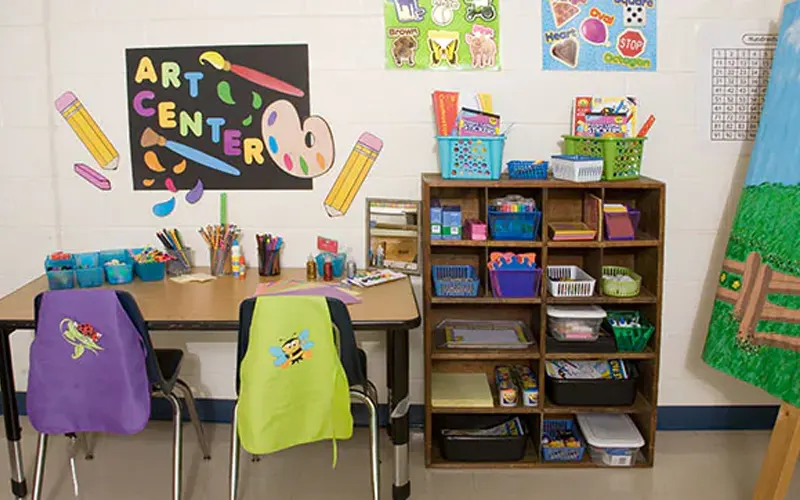
Preschool Art Center
An art center is a must-have for fostering creativity and self-expression. Stock it with child-friendly materials like crayons, paint, and recycled craft supplies. Use colorful wall displays and drying racks to showcase student artwork, making the space both inspiring and functional.
Preschool Science Center
A hands-on science center sparks curiosity and exploration. Equip the area with magnifying glasses, sensory bins, and simple experiments. Posters of nature, planets, and the human body can serve as engaging preschool classroom decorations, encouraging young minds to ask questions and discover.
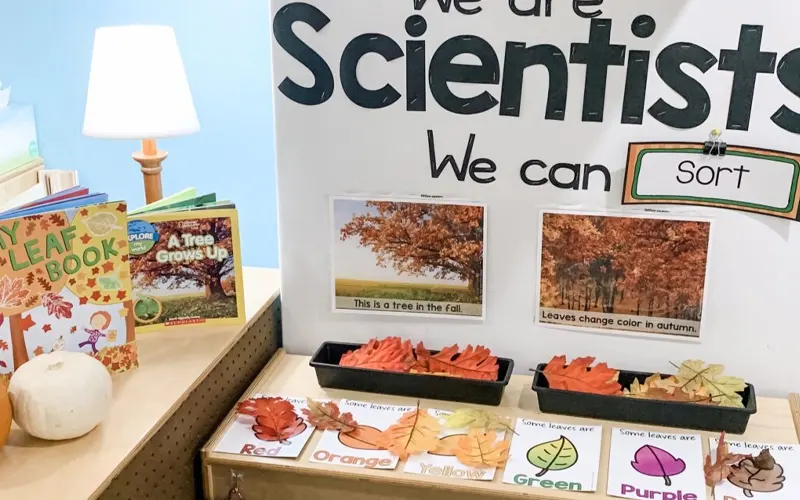
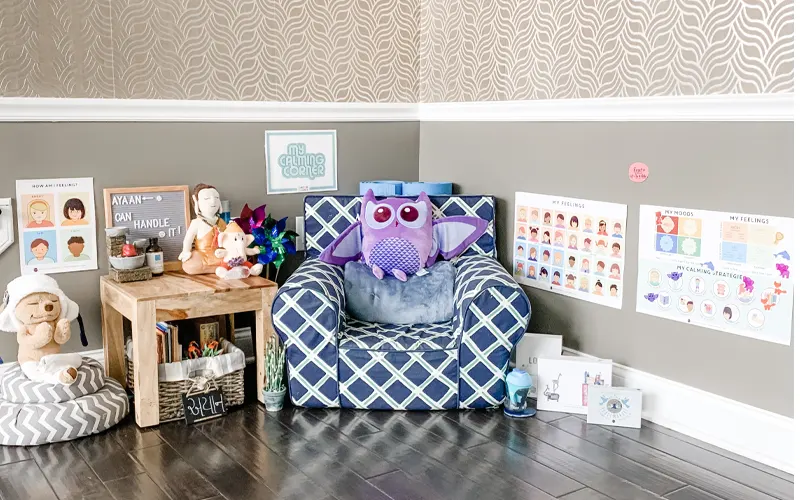
Calming Corner
A calming corner helps children self-regulate and manage emotions. Use soft seating, muted colors, and sensory elements like fidget toys or weighted blankets. Adding nature-themed decor, such as a starry sky canopy or gentle lighting, can make the space even more soothing.
Classroom Reading Corner
A cozy reading nook encourages a love for books. Organize shelves with accessible picture books, add bean bags or cushions for comfort, and decorate with alphabet posters or storytelling-themed wall decals to create an inviting literary space.
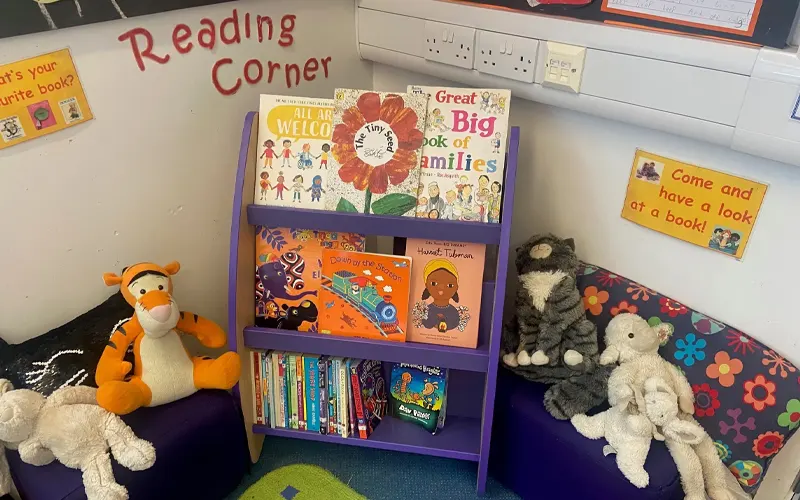

Dramatic Play Area
Dramatic play enhances social and cognitive skills. Whether it’s a pretend kitchen, a mini-market, or a doctor’s office, props and themed backdrops can bring imaginative play to life. Rotate setups regularly to keep the space engaging for children.
Choosing the Right Color Scheme
Color plays a crucial role in shaping the learning environment of a preschool classroom. The right color scheme can influence children’s emotions, focus, and overall engagement. When selecting colors for preschool classroom decor, it’s essential to strike a balance between stimulating creativity and maintaining a sense of calm.
Understanding Color Psychology
Different colors evoke different emotions, making it important to choose wisely:
- Warm Colors (Red, Orange, Yellow): These colors promote energy, enthusiasm, and creativity. However, too much red can be overstimulating, so it’s best used as an accent.
- Cool Colors (Blue, Green, Purple): These hues create a calming effect, making them ideal for reading nooks, quiet areas, or nap spaces.
- Neutral Colors (Beige, Gray, White): These colors help balance the environment and prevent visual clutter. They work well as base colors, allowing brighter tones to stand out.
Practical Tips for Implementation
- Keep the overall palette limited to 3-5 colors to maintain harmony.
- Use natural light to enhance colors and prevent an overly dark or overwhelming atmosphere.
- Involve children in the decorating process by letting them vote on accent colors or wall decorations.
Preschool Classroom Decor Themes
Introducing a theme-based decoration strategy can transform a preschool classroom into an immersive learning environment. A well-chosen theme makes learning more exciting and encourages curiosity. Some popular themes include:
- Nature-Inspired Classrooms: Incorporate trees, flowers, butterflies, and earthy tones to create a calming and eco-friendly atmosphere. Adding potted plants and nature-themed wall decals can enhance the effect.
- Under the Sea Adventures: Decorate the classroom with blue backdrops, fish cutouts, and seashell crafts. Hanging jellyfish or sea creature mobiles from the ceiling can create an immersive underwater effect.
- Space Exploration: Stars, planets, and astronaut-themed decorations can spark children’s curiosity about the universe. Glow-in-the-dark stickers and interactive solar system models make the theme more engaging.
- Jungle Safari: Trees, animals, and adventure trails to create a sense of exploration.
Changing themes throughout the school year keeps the classroom exciting and fresh. Seasonal or cultural themes can also help children learn about different traditions and celebrations.
Preschool Furniture
Furniture in a preschool classroom serves a dual purpose—it must be functional and contribute to the overall aesthetic. Child-sized tables and chairs in vibrant colors, natural wooden finishes, or pastel tones can complement various classroom themes.
Storage solutions should also be considered part of the decor. Open shelves with labeled bins encourage organization while maintaining a visually appealing setup. Transparent bins allow children to see where their materials are, promoting independence. Moreover, flexible seating options like bean bags, floor cushions, and rocking stools make the classroom feel more inviting and comfortable.



Preschool Classroom Wall Decorations
Walls offer an excellent canvas for learning and inspiration. Interactive wall decor, such as alphabet and number charts, world maps, and growth measurement charts, can double as decoration and educational tools. Displaying children’s artwork adds a personal touch and instills a sense of pride in young learners. A dedicated “Wall of Fame” can celebrate students’ creativity and achievements.
Bulletin boards can also serve as focal points for themed or seasonal decorations. Rotating these displays according to different lessons keeps the environment dynamic. Consider incorporating sensory elements like felt boards, Velcro shapes, or magnetic letters to engage children in interactive learning.
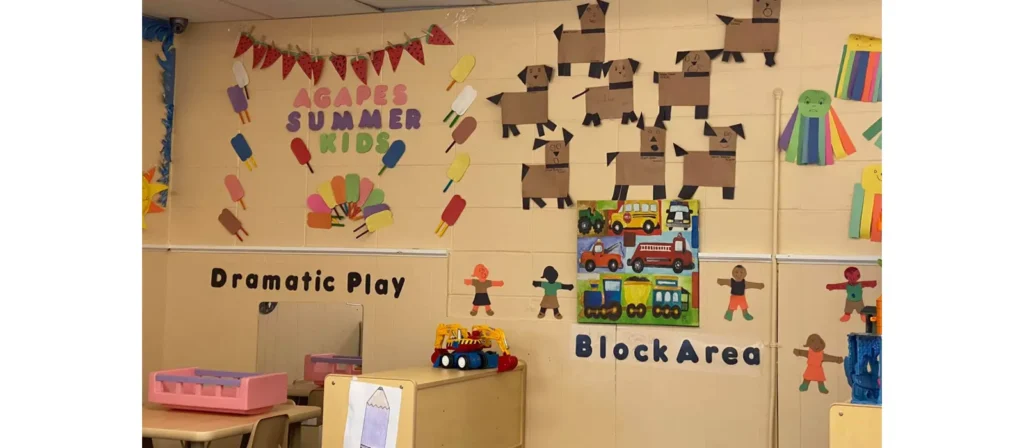
Carpeting and Flooring
Flooring choices play a crucial role in classroom decor and functionality. Soft carpets or foam mats in activity areas create a cozy atmosphere and reduce noise levels. Educational rugs featuring letters, numbers, or road maps add an interactive element to the floor space.
Using modular carpets or play mats allows flexibility in the classroom layout. These can be rearranged to create distinct zones for reading, play, and group activities. Additionally, washable, non-slip rugs ensure safety while maintaining cleanliness in a high-traffic preschool setting.
Preschool Classroom Door Decorations
The classroom door serves as the first impression of the learning space. Decorating it with welcome signs, student name tags, or seasonal themes can make it more inviting. Interactive elements, such as a “Question of the Day” or a mood tracker, can also be incorporated into door designs to engage students even before they enter the room.
A themed entrance—such as a jungle door with vines and animals, or a castle entrance for a fairytale theme—can make children excited to step into their learning space. Changing door decorations throughout the year keeps the atmosphere fresh and engaging.
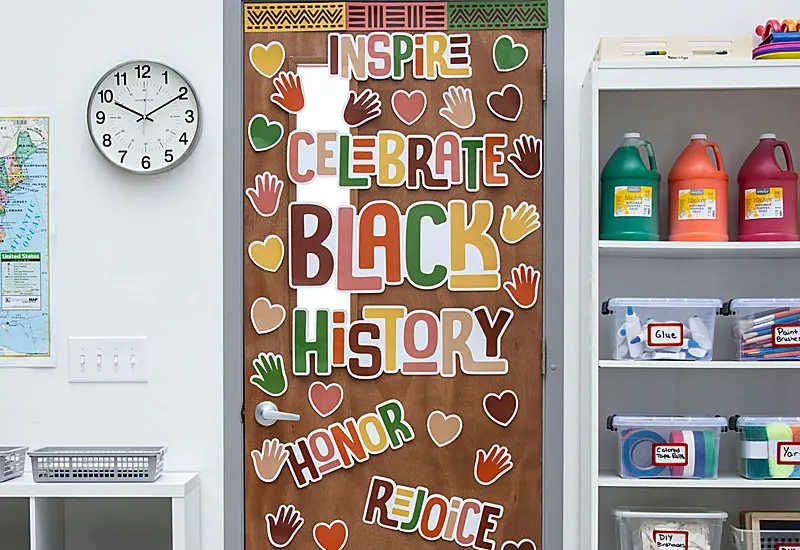
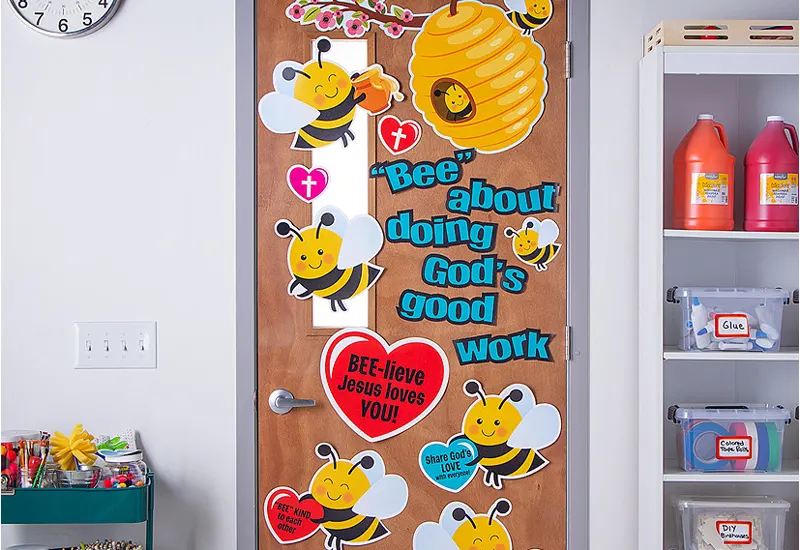
Curtains and Window Treatments
Natural light is essential for a vibrant learning environment, but the right curtains or window treatments can help control brightness while adding to the decor. Light, sheer curtains in pastel colors or playful patterns can enhance aesthetics without blocking light. Consider using themed window clings or hanging decorations to make the windows visually appealing.
Preschool Classroom Ceiling Decorations
Often overlooked, the ceiling can be a fantastic area for decoration. Hanging paper lanterns, colorful mobiles, or even DIY cloud and star decorations can make the classroom feel more immersive. Stringing up banners with positive affirmations can also reinforce a growth mindset.
Incorporate Natural Elements
Bringing nature into the classroom has numerous benefits, from improving air quality to fostering a sense of calm. Indoor plants, nature-themed murals, and wooden furniture help create a soothing atmosphere. A small classroom garden or an aquarium can serve as both decor and an interactive learning tool.
Additionally, incorporating natural textures—such as wooden shelves, wicker baskets, or linen curtains—adds warmth to the space. Providing sensory experiences with nature, such as a tactile sensory bin filled with sand, leaves, or pinecones, enhances children’s connection to the environment.
Seasonal Preschool Classroom Decorations
Decorating a preschool classroom according to the seasons keeps the environment fresh, engaging, and educational. Seasonal themes help children connect with nature, explore changes in the world around them, and celebrate special occasions. Whether it’s bright flowers for spring or cozy snowflakes for winter, seasonal preschool classroom decorations enhance the learning atmosphere and make the classroom an exciting place for young learners.
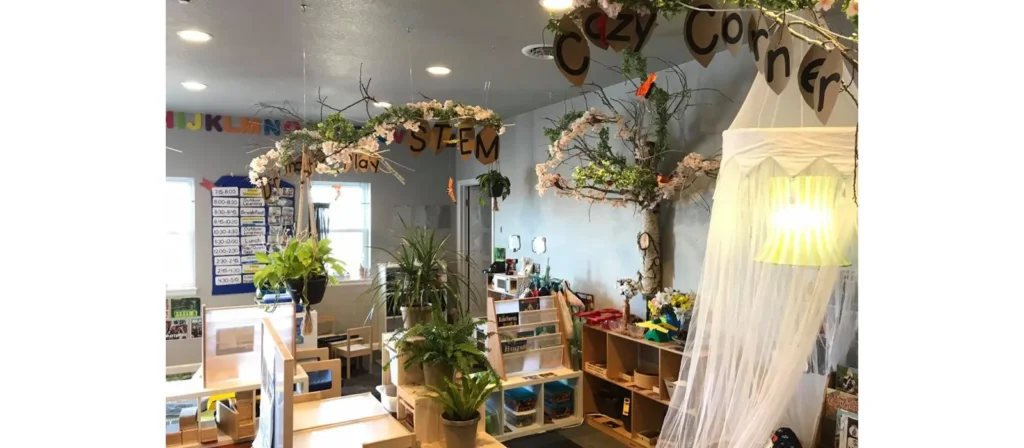
Spring Preschool Classroom Decorations
Spring is the season of renewal, making it the perfect time to incorporate fresh, colorful, and nature-inspired preschool classroom decor themes.
- Wall Decorations: To create a vibrant setting, use preschool classroom wall decorations like butterfly cutouts, flower garlands, and rainbow banners.
- Classroom Door Decorations: Consider classroom door decoration ideas for preschool, such as a “Growing Garden” door with paper flowers and students’ names as petals.
- Ceiling Decorations: Hanging decorations like paper clouds, raindrops, and sunshine can make the space feel light and airy.
- Activity Corners: Create a planting station where children can grow small plants or herbs, incorporating classroom decoration ideas for preschool with garden themes.
- Printable Decorations: Use preschool classroom decorations printable materials such as spring-themed alphabet posters and nature-based learning charts.
Summer Preschool Classroom Decorations
Summer classroom decorations should reflect warmth, adventure, and fun outdoor activities. Classroom decor ideas for preschool in summer often include beach, ocean, and camping themes.
- Wall Decor: Display ocean waves, fish, and seashells with wall decor for preschool classroom to create an underwater world.
- Themed Classroom Decor: Use preschool classroom theme decoration featuring beach balls, sandcastles, and sunglasses for a playful atmosphere.
- Classroom Windows: Add colorful sun decals or handprint art to brighten up preschool classroom window decorations.
- DIY Decor: Incorporate DIY preschool classroom decor by crafting paper fans, kites, and pinwheels.
Fall Preschool Classroom Decorations
Fall decorations bring warm tones, harvest themes, and seasonal celebrations. Fall decorations for preschool classroom often focus on pumpkins, leaves, and woodland creatures.
- Wall & Bulletin Boards: Use classroom wall decoration ideas for preschool with falling leaves, scarecrows, and cozy autumn scenes.
- Classroom Doors: Get creative with fall classroom door decoration ideas for preschool, such as a “Pumpkin Patch” with each student’s name on a pumpkin.
- Hanging Decor: Preschool classroom ceiling decorations can feature autumn leaves, acorns, and owls.
- Interactive Elements: A gratitude tree where children add thankful notes is a great preschool classroom decoration idea.
Winter Preschool Classroom Decorations
Winter themes create a cozy and magical learning environment with snowflakes, mittens, and festive decor. Winter decorations for preschool classroom bring excitement as children learn about winter weather and holidays.
- Wall & Window Decorations: Use preschool classrooms winter decorations like snowflake cutouts, icicle garlands, and winter animals.
- Classroom Doors: Winter classroom door decoration ideas for preschool include a “Winter Wonderland” theme with snowmen and a sledding scene.
- Ceiling Decor: Hang cotton snowflakes or soft lights for a festive atmosphere.
- Sensory Areas: A snow-themed sensory bin with fake snow and winter animal figurines enhances classroom decorating themes for preschool.
Holiday Preschool Classroom Decorations
Holiday decorations make preschool classrooms festive and exciting. Whether it’s Halloween, Thanksgiving, or Christmas holiday, preschool classroom decorations help children understand cultural traditions while adding warmth and fun to the space.
Preschool Halloween Classroom Decorations
Halloween decorations bring playful spookiness to the classroom. Preschool classroom halloween decorations should be fun and not too scary.

- Wall Decorations: Use classroom decorations for preschool, like friendly ghosts, pumpkins, and bats.
- Classroom Doors: Preschool classroom door decoration ideas can include a “Friendly Monster” or “Pumpkin Patch” theme.
- Interactive Decor: A “Trick-or-Treat” counting board can be part of the classroom preschool decoration while reinforcing learning.
- DIY Crafts: Encourage children to create paper jack-o’-lanterns and spider webs to decorate the classroom.
Thanksgiving Preschool Classroom Decorations
Thanksgiving decor focuses on gratitude, harvest, and togetherness. Classroom decor preschool for Thanksgiving can include warm autumn hues and thematic elements.
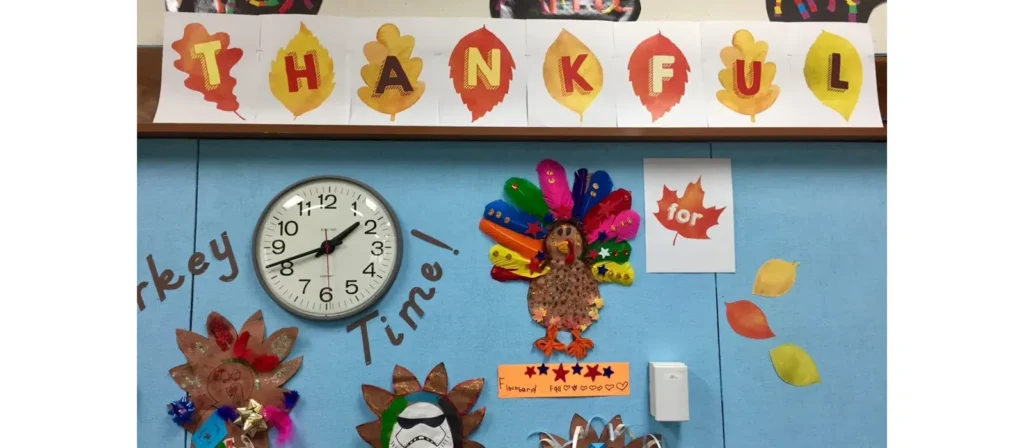
- Wall & Bulletin Boards: A “Thankful Tree” with student-made leaves expressing gratitude makes for an engaging preschool classroom wall decor.
- Classroom Door Decorations: Preschool classroom door decorations like a turkey with students’ handprints as feathers add a personal touch.
- Table Decorations: Use decorations for classroom preschool elements such as paper pumpkins, cornucopias, and autumn garlands.
Preschool Christmas Classroom Decorations
Christmas decorations bring joy and warmth to the preschool environment. Preschool Christmas classroom decorations can feature holiday colors, festive characters, and cozy winter themes.
Printable Decor: Preschool classroom decorations printable, like holiday-themed alphabet charts and number posters, add a festive learning touch.
Wall & Ceiling Decor: Use Christmas decorations, such as snowflakes, Christmas trees, and twinkling lights, in the preschool classroom.
Classroom Doors: Preschool classroom door decoration ideas include a “Santa’s Workshop” or “Gingerbread House” theme.
Christmas Craft Corner: Christmas classroom decoration ideas preschool can include a DIY ornament-making station.
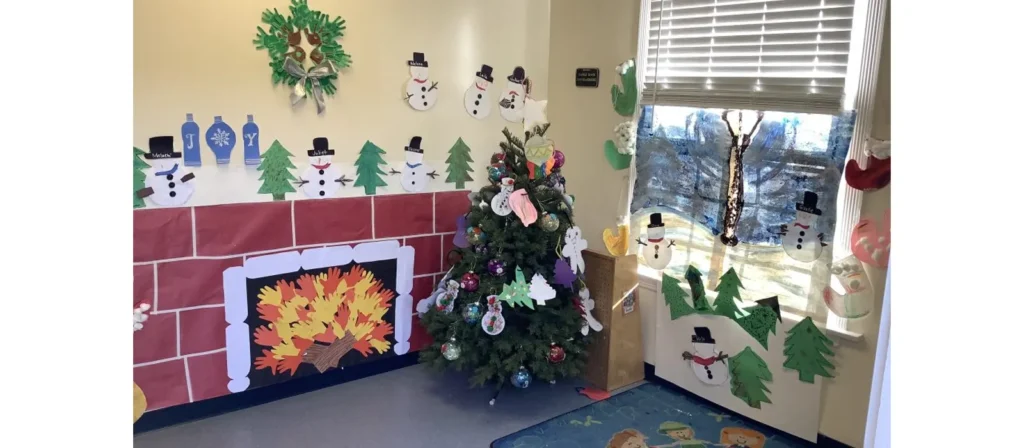
Conclusion
Preschool classroom decorations play a crucial role in shaping the learning experience for young children. A well-decorated classroom provides visual stimulation, encourages interaction, and fosters creativity. By carefully selecting themes, using interactive elements, and incorporating seasonal and holiday decor, educators can create a dynamic and engaging learning environment.
From interactive bulletin boards to nature-inspired decorations, every element of the classroom should support learning while making the space welcoming and enjoyable. Decorations should be both functional and fun, ensuring that children feel inspired every day they step into their preschool classroom.
By continuously refreshing the environment, teachers can keep students engaged and excited about learning, creating a foundation for lifelong curiosity and creativity.

